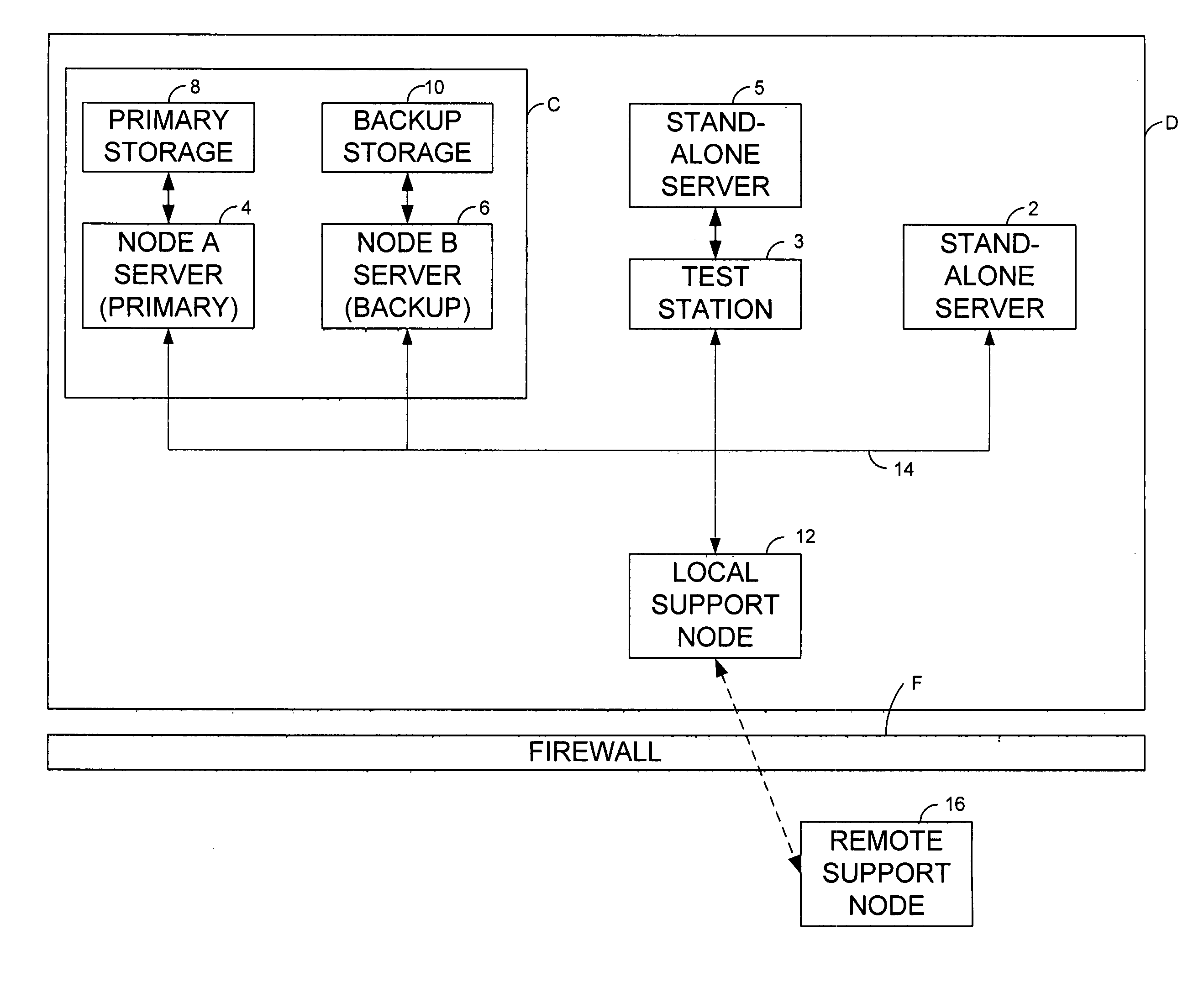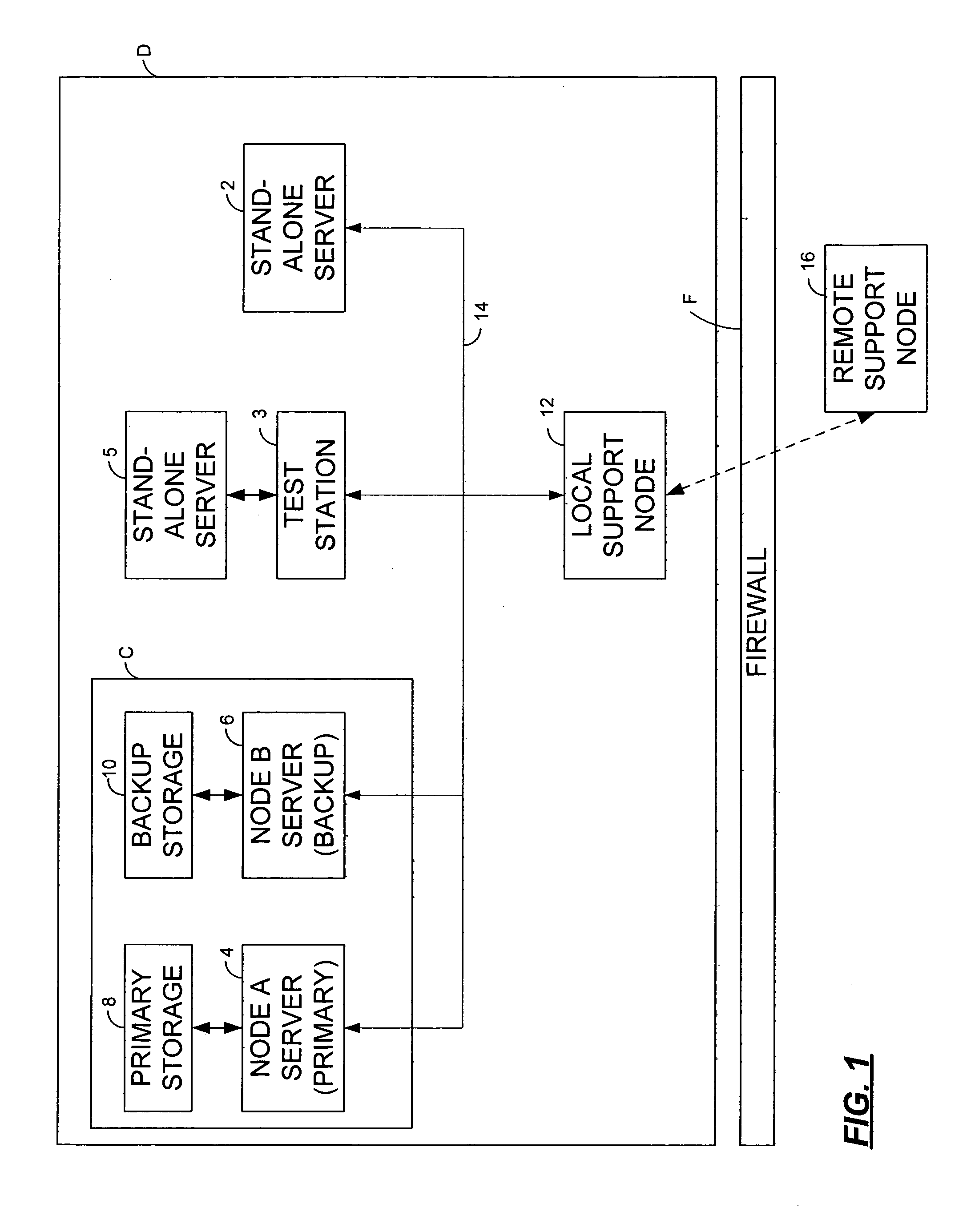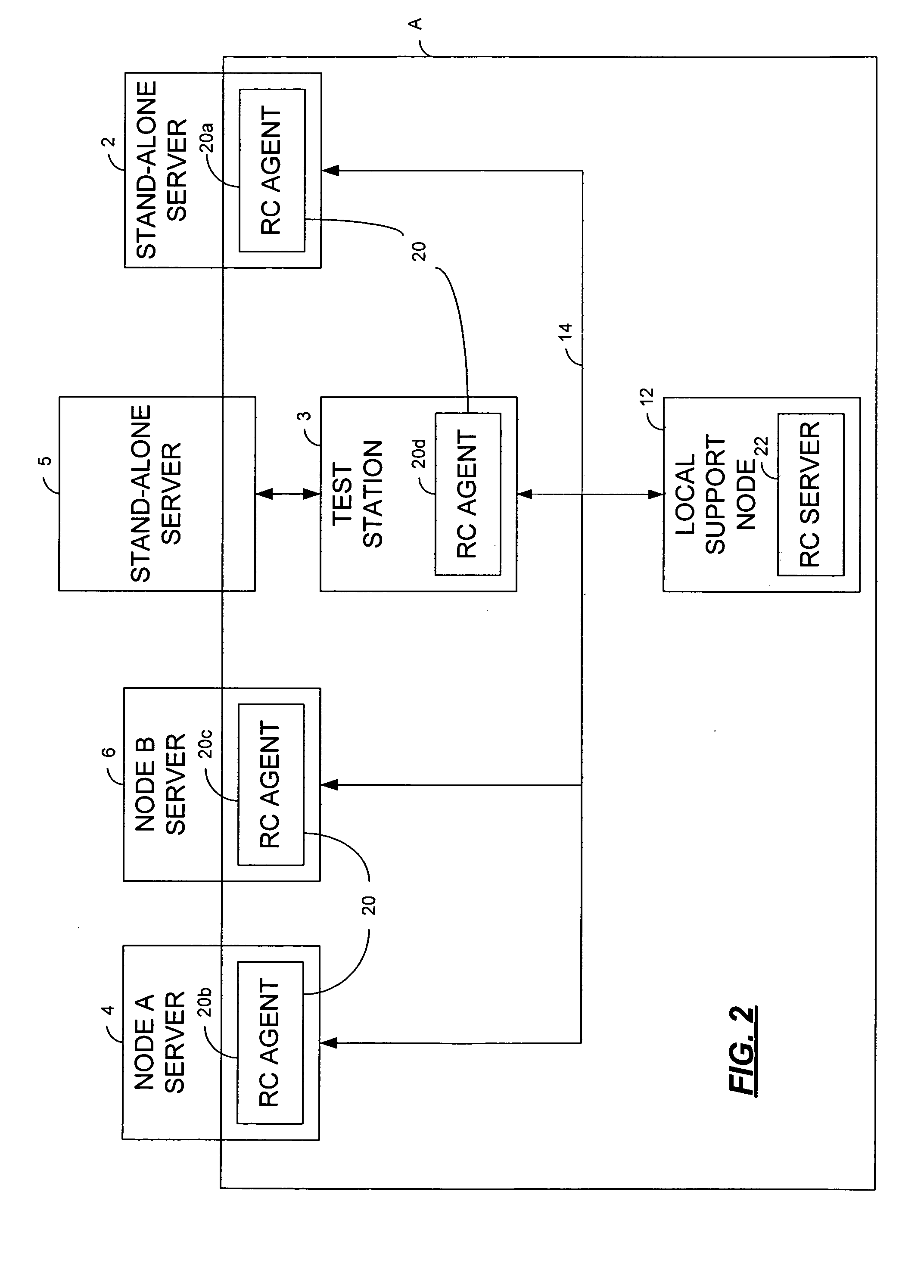Method and apparatus for automating the root cause analysis of system failures
a technology of root cause analysis and root cause analysis, applied in the field of method and apparatus for automating the root cause analysis of system failures, can solve the problems of unplanned downtime, increased manufacturing, deployment, and maintenance of highly available information technology (it) resources, and increased costs
- Summary
- Abstract
- Description
- Claims
- Application Information
AI Technical Summary
Benefits of technology
Problems solved by technology
Method used
Image
Examples
Embodiment Construction
[0035] A Root Cause (“RC”) analyzer or monitor, according to an embodiment of the present invention, automatically determines the root cause of a system failure and automatically transfers that information for further analysis. Unlike prior art root cause analyzers based on manual analysis, the present invention is automated. Additionally, the root cause analyzer is advantageously robust: monitorable entities may be discovered automatically; failure data may be maintained over multiple reboots; retry mechanisms are provided to transmit failure data in the presence of network or software failures; and data recovery mechanisms can preserve failure data across disk failures.
[0036] Now referring to FIG. 1, there is illustrated a computing data center D, upon which an embodiment of the RC analyzer of the present invention may be implemented. The RC analyzer is related to a distributed software system capable of computing root causes of system failures on Stand-Alone Servers 2, Stand-Alo...
PUM
 Login to View More
Login to View More Abstract
Description
Claims
Application Information
 Login to View More
Login to View More - R&D
- Intellectual Property
- Life Sciences
- Materials
- Tech Scout
- Unparalleled Data Quality
- Higher Quality Content
- 60% Fewer Hallucinations
Browse by: Latest US Patents, China's latest patents, Technical Efficacy Thesaurus, Application Domain, Technology Topic, Popular Technical Reports.
© 2025 PatSnap. All rights reserved.Legal|Privacy policy|Modern Slavery Act Transparency Statement|Sitemap|About US| Contact US: help@patsnap.com



